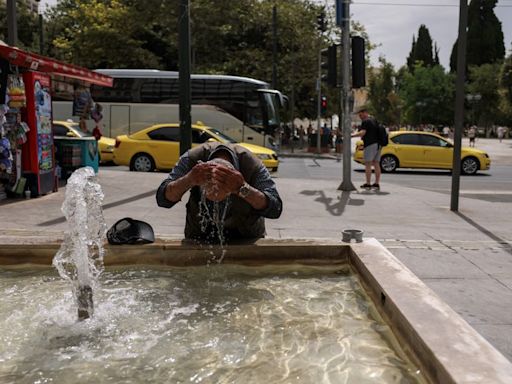Search results
pinterest.com
- There are three systems of architecture, known as orders, the Doric, the Ionic and the Corinthian, the later being a variation of the Ionic, differing only in the form of the capital.
www.athenskey.com › 3-orders-of-architecture
In Athens, the Ionic order influences some elements of the Parthenon (447–432 B.C.E.), notably the Ionic frieze that encircles the cella of the temple. Ionic columns are also employed in the interior of the monumental gateway to the Acropolis known as the Propylaia (c. 437–432 B.C.E.).
People also ask
Which order was the earliest in Ancient Greek architecture?
How did the Ionic order influence the Parthenon?
What is a classical order?
When did the Doric order start?
Learn more about ancient Greek architecture in three chapters in Reframing Art History: “Pottery, the body, and the gods in ancient Greece, c. 800–490 B.C.E., ” “War, democracy, and art in ancient Greece, c. 490–350 B.C.E.,” and “Empire and Art in the Hellenistic world (c. 350–31 B.C.E.).”
- 19th and early 20th century beaux-arts architecture often mixed orders, though never side-by-side. One of the characteristics of the postmodern sty...
- This combination of Doric elements (exterior) and Ionic elements (interior) reflects the mid-5th century notion about the appropriateness of their...
- A frieze, by definition, is a broad horizontal band atop the post (of a post-and-lintel structure). In Graeco-Roman architecture, frieze courses ca...
- Because they are very old and a lot of things have happened to them, including earthquakes and storms and cannon fire. If you read about the Parthe...
- Because we have lots of records and accounts of the structures. Records for funding it, people talking about it when it went up and after it was de...
- why do building styles change today? its all a matter of how tasted evolves. obviously when they moved to Ionic they were tired of the old way or t...
- It actually doesn't make any difference at all. The "order" of the particular column is just something to note which may help you date the structur...
- We answer this question in the following video.
Jun 10, 2024 · In Athens, the Ionic order influences some elements of the Parthenon, notably the frieze that encircles the cella of the temple, the Propylaia, and the exterior order in the construction of the Erechtheion.
There are three systems of architecture, known as orders, the Doric, the Ionic and the Corinthian, the later being a variation of the Ionic, differing only in the form of the capital. The Doric order originated on the mainland and on western Greece.
The Doric order emerged on the Greek mainland during the course of the late seventh century B.C.E. and remained the predominant order for Greek temple construction through the early fifth century B.C.E., although notable buildings of the Classical period—especially the canonical Parthenon in Athens—still employ it.
The Corinthian order (Greek: Κορινθιακὸς ῥυθμός, Korinthiakós rythmós; Latin: Ordo Corinthius) is the last developed and most ornate of the three principal classical orders of Ancient Greek architecture and Roman architecture.
The Acropolis of Athens (Ancient Greek: ἡ Ἀκρόπολις τῶν Ἀθηνῶν, romanized: hē Akropolis tōn Athēnōn; Modern Greek: Ακρόπολη Αθηνών, romanized: Akrópoli Athinón) is an ancient citadel located on a rocky outcrop above the city of Athens, Greece, and contains the remains of several ancient buildings of ...

